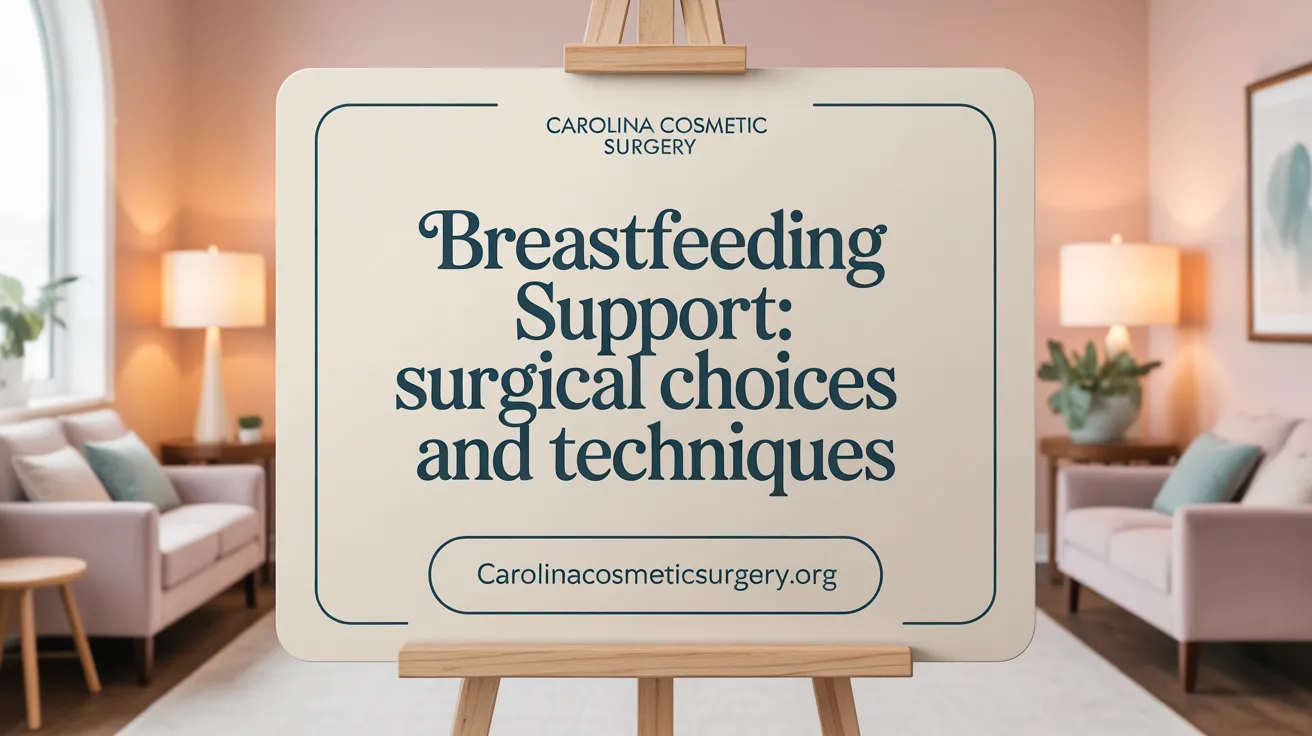Understanding Breastfeeding After Breast Augmentation
Breast augmentation is a common surgical procedure that can impact lactation and breastfeeding potential in various ways. As more women with breast implants seek to breastfeed, understanding the effects of surgical techniques, implant placement, and postoperative care is essential. This article explores how breast augmentation influences breastfeeding success, safety considerations, scientific findings, and practical guidance for women aiming to nurse after augmentation.
<!-- VIDEO:eyJsaW5rIjoiaHR0cHM6Ly93d3cueW91dHViZS5jb20vd2F0Y2g/dj1hdjZPRDBtbGdfayIsImltYWdlVXJsIjoiZGF0YTppbWFnZS9qcGVnO2Jhc2U2NCwvOWovNEFBUVNrWkpSZ0FCQVFBQUFRQUJBQUQvMndDRUFBa0dCd2dIQmdrSUJ3Z0tDZ2tMRFJZUERRd01EUnNVRlJBV0lCMGlJaUFkSHg4a0tEUXNKQ1l4Sng4ZkxUMHRNVFUzT2pvNkl5cy9SRDg0UXpRNU9qY0JDZ29LRFF3TkdnOFBHamNsSHlVM056YzNOemMzTnpjM056YzNOemMzTnpjM056YzNOemMzTnpjM056YzNOemMzTnpjM056YzNOemMzTnpjM056YzNOLy9BQUJFSUFGTUFsQU1CSWdBQ0VRRURFUUgveEFBY0FBQUNBZ01CQVFBQUFBQUFBQUFBQUFBQUJRUUdBZ01IQVFqL3hBQStFQUFDQVFNREFnTUZCQVlKQlFBQUFBQUJBZ01BQkJFRkVpRUdNUk5CVVJRaVlYR0JJektoc1VKU2tjSFI0UWNWRmlVelk3THc4VFJpY29LUy84UUFHZ0VBQWdNQkFRQUFBQUFBQUFBQUFBQUFBZ01BQVFRRkJ2L0VBQ0lSQUFJQ0FRUURBUUVCQUFBQUFBQUFBQUFCQWhFaEF4SXhVUVF5UVNLQmNmL2FBQXdEQVFBQ0VRTVJBRDhBUlZOc3RPTjNZYWhkaVVJTEpFY3J0enYzTnQrbFFxYWFMcU5wWjIxL2JYMEU4c040aUtmQmtDbGRyYnZNR3VwSzZ3ZEYzV0NNZEx2eFlyZkcwazlsYkdKTWNjbkErT00rZFRrNlcxa3BNejJUUmVGRUpDc3JCU1JuSEE5Zm5pcGNYVVZqYTJMVzlscHJST1JIN3haUGVhT1RjcFk3Y25PT2VjZWdGYXBkYTB4cm5VNUZzYm9SNmxHM2pxWjF5cmx3L3VuYjJ5UE9nM1Q2QTNUNklVV2dhcEs5b3Zzam9MdHdrVFBnQWtqSXo2Y2M4K1ZaemFGZHhSaU1RelBkbTZOdUkwUUZXOTBNTU5udnpuR08xVHoxSlpMQmFwYTZiNEl0N3lDOENxNmhTeUFoaHd1U0QzeVNUaytneFJiZFNXdG8yMjNzcFRDYjJXNEt2S054V1NMdzJHUU8vSklQL05WZXAwUzU5Q3hkQjFacmg3ZGRQbmFWRlZtVlFEaFdPQWMrWVBxS2hYRUV0dE84RnhHMGNzWjJ1akRsVFR1Ylg0RHAwdW53MjBndC9aWTdlSXU0TGU3SVhKYkF4em5HQlM3WEw5ZFUxZTZ2a2pNWW5mY0VKeVJ3Qis2amk1TjVRU2NyeVFhd2I3NXJPdGJmZk5JOHowSzFPREpUWHJTckVoWnpnVmdEU3U3dXN2STVPSW93Y2ZINDF6WXh0aUpTcEdHcDZ4S0RzUTdBZXlnL25TdFZ1cnQvRGg4U1Z2OEFMQi9IQnF4ZEQ5S1AxQksybzZpV1MwM1lWVk9ESi9JVjEzUzlGc0xLRVIydHJGR2dIWUxUVlN3Z05zbmxuQ0l0TzFLREcrR1RCOVJtbUZqckUrbTNJUzdQMlI0MjV5VitOZHVsdG9zRWJGLythbzNXblRkdmQyY2x4RkdFbmpHY3FQdkQ1VU1xZUMxRnJLWm5iekk4YXVoQlZoa0VlWXFYRTQ0cWs5STZoZ0d5bE9RUDhNK25xS3QwVGVuYXNVNDdYUnJqSzBOVmIzUlJVVlhPTzllMGtNcDlGRkZlc0JOdHBDMXpkUXdJcnMwa2lvQWdCWTVPT00rZFhIVGRHc05OMXF3bUlua1dTMnVaVmprYU55anhnak9RTnA3ZlE0cXB3V2svc00ycFJTS2tkdEtpRTdpSERObmFSK3oxcktUV05SbGNTU2FoY3M2N3NNWlNjYmg3MlBtS1ZKT1hEQWtuTGhsa2wwaXcxV2F3bFZydU41N0tTOHVKcEdYTWdVc01jREFZNEhZWXhrNHFEZGFMcFVGbGVYZ3ZiaVdPSm8xaUVTcTJXZENjRThkaU80OHFUUmFuZlFwQWtWN09pd01XaFZaU0JHVDN4enh4bjl0RStvWGwyWFdlNm5tTXpxekJuTGIySEM4ZVp4d0tpaEpmU2xHUytrV3Zhem1pa2dsZUtaR1NSRHRaR0dDcDlEV0ZOc1lGYVhPSE5icWp5bjN6V1h5L1FYcWNHbThtOEsyZHh3Y2NWWHBtTXFDM0J3MHJMSG4weXdIOGFZNjVNVlJZMU9PNU5RTkhqOW8xZTFUL0FEVkorbVRXS09FWlhsbmM5RXRJYlBUNExlQlFzVWFCVkh3cHhCT2lEakJxZzNmdHloWVlkSFc1SUFMeVhNbTBIL3hHZjVWWWRDaW10eEY0OE1jTWJESGh4dGtBL0Q4YUZEWDBOcnk5dG8rWnBvNHMvck1CbWsrcFhWdE5BNnd6UnlNVjdLYzE1ckZyUE8wc2xzYmNNcE94cGszYlRqamo1MHR0YmJYSkkyOXVObE5DdVNERWhUYWZoeHpWc2h4NXJ1YlRkYW1COTFvNVNDUHJ4WFROUHVoY1c4Y3FIaDFCcWpkYzZjc1hVbmlFa0xPZ1p0bzdFREg3cWY4QVI4eGZURVZteVZPQlNkYUthc21rMm5RL3VkUWVDVFlMV2VRWXp1akFJL09pbDl6ZFhjTnhJcW0zWmM1RytmYVFQVEdLOHJHYWlKUlJVL1FiUVgrcjIxcVlZNWhJVzl5U1JvMU9GSjVaUVNPM3BYcVc2VmxOME5lbDlWZzAreHVJMzFBV2N6M1VNZ1l4TSs1Rnp1QXdwNU9jVk9qNmxzRW0wMEt1MnpXOHVKcmkzOEhKVldrTFJlWE9NaHNBK1ZKb09tN2lXeVM2TjdZUnExc0xyWkpJd1pZczRMSEMrUi9sbXR2OWxic1R5UlNYbGhINGM4Y0FkNUcydTBpN2t4N3ZtS1MxQnUyeFQyTnUyT1lPb0xBYW43VFBxWkxSUlJxc2xza3c4WUNRbGxjc0M1T01ZNUFPY0U4VnBrMXV3aHM1MGd2bUJGODA4QzJxeVJsZ1p0MkhCRzBqYUJnNUJIQXBiY2FJZ3M5TGp5bHZkeWUxQzRaeTc3bWpsMkFCVkRISUhvT2FFNlR2amN5MjhselpSUEhkaTArMGtiRHlGZHdBd3ZtS3JiRHNxb2RrWHFlOGp2OEFXN202aHZHdW9wR0xSc3lzdTFTU1F1RzU0elNxbjZkTVNUUmFhSUx5QnJtOE13TVRCL2Q4TTg0d3B6akIrWnhqUGVrdDNCN05jeVFGdzVRNExLR0FQMFlBajZpbXhhNFF5TFhDTlZSWmppUS9TcFZRcm8vYW42ZmxTZkw5UDZEcStvZzFoaTl5Um5zdUsyOUt2czE2eUw5bWtBL0ExcXVGM1hUNVA2UUFyRzNQc2w1YXpIamJPbjdNNC9mV0tzR1JQSjlBMmMwTFc0TTIwZ0Rna2RxZ1NhelltN2pTYVpZMExZUXZ4dUhxUGhVUFRvalBBQTdFeHNCMnJWYjNjV3FTeVJMWjJtMkJ6RTN0Y3dpSUk5QmpQL0h5b09UUzZKczJydy8xbWJleUl1VDNLTC9IdG40VXludkk1N1BkR0NvOHdlNHF1M1YxRnBTWWdPbHRLRTNDM2l1OTh6ZkFBRGsxTGVPVTZmN1RORzFzN3B1ZUlzRHRQcHg1MWJ3VERPZWRaTWd1YnE4WlFWamlLSmtkbmJnZm5Xbm90dHNESzNBWEdhWGRWNmk4OTdKWUtxK0VqcXpOM0xISGI4YWxhSktiZTB1SmRtL0NaS2c0enhRelg0RlJsK3kyUWFVTDVXbW5zaE1TM3V5UXNGREw1WnlPOUZWQ2VJYWd5M0s4YjFCS3BkOWo2RWVSK0ZlMWsyTWR1UTNxVHB0OU5wdDlGZVd3UXl4RWxkNHlPUVJ5UGthalVWNlZxeG80dGRSMUM2aGEwaFdBcUxIMlBCVWcrRnV6M3o5N1BuVTQ5U1RyYjNIdE5uRkpxQnU0WlYzUkV4eCtISHRCQTNmZUhIcU85VnlLV1NJa3hPeUU5OEh2VXl5c3BkUWl1WmhjQVBHUnc1KzlrT3g1OHNLakg5bExjWS9RSEZmU1piNjNxMGFwaUJaUXNjMFpMd00yOFN1SGZQUDZ3SHA5YXprMTNWNXJwWld0b3ZGTjRsMlBzR0FNcXJ0Qjc5c2Q2ano5T1g4TWNza29oeEVHTER4T1NGWGMyT1BTb2QxYTNPbDNFYXlmWnlGQkl1MCtSei9BMUVvdmdsUitEQzQxYTh0UkRiWGRyWXpHRjNsVHhJeVN1OGtrWkJCQXp5TWM5dWFXNmplejZqZXkzbDBRWnBUbHRvd08yUHlGYXBaWkpqdWxkblBxeHpXRkVvcFpDVVVncGJxRW9qbGZQbC9DbVZWcldYenFUcVc1QVhHUElZSGVrZVY2TC9SZXQ2a1lOdm40UEhKL0N0dXF3aDdhUUtPY1pxR0gyejV5Zk9wcnlpUjVFNys1V1F4blEvNk9lb1k5UTA2T09aZ0o0dmNrQjlmWDYxWnIzU0lyNjZXV1MydDV5Umo3V0lOWEdlazBtamt1SHRuS3VwNE5kSzBQcTEwZ0VWN0U1a1RqY0tYOU5FSk9ySGFhS2xySWpSVzl2QXY2a0VZUUg1MHY2djFlTFRkTmxNamU4dWVQVStRcnk5NnhoV01tT0tSNVAwUWUxYzI2cXU1N3BvemN2bDVITW0zMEZYeVNjblFqekpQY1NTeWN5U01TZm1hYlJHUjlPdW9iWU1XY0JlRHpqenBiQmpQeFA0Vk90WkZSM2pZbEVjWTNaN1ZOVDFGYWZzTzlGbW1oc3ZCbjZQWFVwWTNLdmNiNUY1OUNGVWpqaWlvQmpuMDEydDRlbzVMSVpETkVaM2k1SUhPQjZqSE5lMWxINUxMcDFqN2JiWHpScXp6UXhvOGFxZStYQWJQMEpOT1A3S3h4M1NSejNybEdrUkQ0Y0kzTG5QM3Zld09SZ2Q4bXF3UUQzRkdCNkN1ODFMc2EwK3l5UWROSjRjTWs5eEptUkZjUmlNQWozNHdjNFk4WWZQSEl3ZlN2RjZiUXV2OEFlSWpTVEhhUE9jc2lqSHZlOEI0bUNlTUVFYzFYTUQwRkdCNkNxMnk3SnRsMlA3ZlN2YUxLQWd6dkpLWmZGbldUSWlLRWp3OW5tekJSakpIM2hXMGRNckpLc2Y4QVdlOTkyM2lMZGdaa0EvUzc1ajVIQUc3dnhWYndQU2pBOUt2YkxzbTE5bGx0ZW00UnRhN3VjeHlxZ1IwQUd6YzBYUGZCL3dBUmgvNmsxZ3ZUQTJJOGw2MFNNV3lIaEJaY01vSEFmejNmREdEVmR3UFNqQTlCVmJaZGxiWmRqRFdOUFRUcElFamxhWGZGdVppb0EzWklJSFBiaXFMclIvdnFYSG92K2tWYXFyT3JwblY1MitDL2tLVnJyOEt3TmJFQlpJY0VIMU9hM3BKOXFULzJIODY4a1hFSlk5OFZpaW5kK0ZZMlpVT3VqanR1cG8vTm00UCsvalZ5ZTBpYjdSQmpQbFZaNktzelBlYk96Q1FmblhUVzBUY0RnZDZCb2RIQ0tmNENoaXo4Z1ZSdGF2RFBmelNqN2llNG55RmRkdjhBUW5pczVURXZ2N1RYTVJvazF6WXllR2hNa1pKWVkvMzU1cUxCSkt4RkJMaHh1TlRCNGZ0TVhqN21neVBFQ0hCSTg4SEJ3ZnBTcVVOREtWWUVFZDYzcmNGVlorL0ZGeWhTd3kwNloxS05PdHZDc3BOV2hETVhrOEM2VlZadXdPQ3BQM1FvK2xlMVVoSnZHNFJ5RWV0RkxVRU1zdjhBUlJSWGFOWVVVVVZDQlJSUlVJRkZGRlFnVlhOWEE5dmxQbjd2K21paWtlUjZpZGYxSVUzL0FFNjFsRUJ2WDUwVVZpWmtSZE9nZU5ZbHg2ajk5ZGRnVWJPMUZGQ2h6UEpsRFJrTUFRUmcxeitKRnR1clpZb0ZDUnV5YmxIWTd0d1A1Q3ZLS3BoUjRPYWYwZ0lzUFV0eWtTaEZHT0FQVVVnQlBoQVo3dlJSVVFtZkkraVVJZ1ZCaFFPQlh0RkZHYUZ3Zi8vWiIsInRpdGxlIjoiQnJlYXN0ZmVlZGluZyBhZnRlciBicmVhc3QgYXVnbWVudGF0aW9uIHwgYnJlYXN0ZmVlZGluZyB3aXRoIC4uLiIsInNuaXBwZXQiOiIuLi4gbGFjdGF0aW9uIGFuZCB3b3VsZCBmaW5kIG91dCBhYm91dCBob3cgaW1wb3J0YW50IGJyZWFzdGZlZWRpbmcgaXMgdG8gdGhlaXIgcGF0aWVudCBhbmQgd291bGQgYmUgdXBmcm9udCBhYm91dCB0aGUgcG9zc2libGUgaW1wYWN0IG9uIGxhY3RhdGlvbiAuLi4ifQ== -->Can Breast Implants Affect the Ability to Breastfeed?

Effect of implants on exclusive breastfeeding rates
Women with breast implants are less likely to exclusively breastfeed compared to women without implants. Research indicates that the likelihood of exclusive breastfeeding among women with implants is about 40% lower, with a pooled rate ratio of 0.60 (95% CI 0.40 to 0.90). For example, women with implants tend to breastfeed less during the first three months postpartum, with rates of about 70.7% compared to 85.1% in women without implants. Despite this reduction, many women with implants do establish and maintain breastfeeding, especially with proper support.
Implant placement and interference with milk ducts
The location where the implant is placed plays a role in breastfeeding potential. Implants placed beneath the chest muscle, called retromuscular placement, are associated with a higher chance of successful breastfeeding, with success rates as high as 82%. In contrast, implants placed over the muscle—retroglandular placement—may pose a higher risk of interfering with milk ducts and nerves, potentially leading to difficulties in breastfeeding.
Incision types and nerve damage
The type of surgical incision significantly influences breastfeeding outcomes. Incisions around the areola are more likely to damage milk ducts and nerves, which can impair milk production and the reflex needed for breastfeeding. Incisions made under the breast or through the armpit typically have less impact, helping preserve breast tissue and nerves. Surgical techniques that avoid nipple incisions and preserve nerve function can greatly improve the chances of successful breastfeeding.
Breastfeeding initiation and duration statistics
Studies show that women with breast implants can initiate breastfeeding at high rates—around 79%—though slightly lower than the national average of 84%. At 30 days postpartum, fewer women with implants continue to breastfeed compared to those without, indicating challenges in maintaining breastfeeding over time. Nonetheless, most mothers with implants are able to breastfeed successfully, with some producing less milk and needing supplementation.
Individual factors influencing breastfeeding success post-augmentation
Individual factors such as the original condition of the breast tissue, surgical details, nerve preservation, and education on breastfeeding techniques influence outcomes. Many women with implants can produce enough milk for their infants, especially when they receive proper guidance from lactation specialists. Support strategies include early and frequent milk expression, proper latch techniques, and close monitoring of infant weight gain.
| Aspect | Impact | Notes |
|---|---|---|
| Implant placement | Less interference with milk ducts | Submuscular placement preferred |
| Incision type | Affects nerve and duct preservation | Around the areola poses more risk |
| Breastfeeding rates | Slight decrease in women with implants | About 70-80% initiate breastfeeding |
| Milk production | May be reduced but still possible | Support with lactation help beneficial |
| Silicone safety | No proven harm to baby | Silicone levels are low; breast milk generally safe |
In conclusion, while breast augmentation may pose some challenges, most women can still successfully breastfeed with appropriate surgical choices, planning, and support. Breastfeeding success depends on multiple individual factors, but the presence of implants alone does not typically prevent a woman from nourishing her baby through breastfeeding.
Safety and Health Considerations of Breastfeeding with Implants

Is it safe to breastfeed with breast implants?
Most women with breast implants can successfully breastfeed their infants. Numerous studies and clinical reports indicate that having implants does not necessarily impede the ability to produce milk or harm the baby. Breast milk from women with implants shows similar nutritional content and safety profile compared to those without implants.
Silicone, used in many implants, is a highly cohesive material designed to stay within the implant shell. Current research has not shown that silicone leaks into breast milk or increases risks for infants. Importantly, there is no evidence linking silicone implants with harmful health effects in babies.
While surgical techniques that preserve nerve and duct integrity, such as placement under the muscle and incisions away from the areola, help maintain lactation ability, some women may still encounter challenges like low milk supply or engorgement. Early and frequent milk stimulation, alongside professional support, can enhance breastfeeding success.
In summary, breastfeeding with breast implants is generally safe when proper surgical practices are employed and mothers receive appropriate guidance. Consulting with healthcare providers before surgery and postpartum can optimize outcomes for both mother and infant.
Challenges and Risks of Breastfeeding After Breast Augmentation

What are the potential risks or challenges of breastfeeding after breast augmentation?
Breastfeeding after breast augmentation is generally feasible, but it may come with certain challenges. Surgical incisions, particularly those made around the areola, can damage milk ducts and nerves, leading to difficulties in milk production and reduced nipple sensitivity. These disruptions can affect the let-down reflex—the process that releases milk from the milk glands—making it harder for mothers to nurse effectively.
Moreover, the placement of implants influences these outcomes. Implants placed under the chest muscle tend to interfere less with milk ducts and nerves than those positioned directly behind the breast tissue. Larger implants or those placed in certain locations might increase the risk of nipple soreness, engorgement, or mastitis, which is inflammation of the breast often caused by infection or blocked milk ducts.
Nerve damage during surgery is another concern. It can diminish nipple sensation, which plays a critical role in stimulating milk ejection reflexes. As a result, some women may find that their milk supply is lower or that they struggle with the initial stages of breastfeeding.
Despite these potential issues, most women with breast implants are able to breastfeed successfully. Proper surgical planning—such as opting for incisions that preserve nerves and ducts, and selecting appropriate implant placement—can help improve breastfeeding outcomes.
Regular medical monitoring is essential to address any challenges promptly. Support from healthcare providers and lactation consultants can help mothers overcome difficulties, improve milk supply, and ensure the health and wellbeing of both mother and infant.
While some women may encounter obstacles, awareness, planning, and proper care often enable successful breastfeeding despite having breast implants.
Influence of Surgical Techniques on Breastfeeding Outcomes

How do different surgical techniques for breast augmentation influence breastfeeding?
Breast augmentation methods vary, and their impact on breastfeeding depends largely on the specific surgical approach used. Key factors include the location of the incision and the placement of the implant.
Incision location plays a vital role. Incisions around the areola (periareolar) can potentially damage milk ducts and nerve endings, which may hinder breastfeeding. In contrast, incisions made beneath the breast fold (inframammary) or through the armpit (transaxillary) are less likely to interfere with ductal structures, thereby preserving breastfeeding potential.
Implant placement is equally significant. Submuscular, or beneath the chest muscle, placement tends to be more protective of glandular tissue and milk ducts compared to placement directly behind the breast tissue (retroglandular). Women with submuscular implants often experience fewer issues with milk production.
Nerve preservation during surgery is also critical. Techniques that minimize nerve damage—such as avoiding incisions around the nipple—help maintain nipple sensitivity and the hormonal reflexes necessary for milk let-down.
Scar tissue formation at surgical sites can sometimes obstruct milk ducts, making milk flow more difficult and increasing the risk for complications like engorgement or mastitis.
To optimize breastfeeding outcomes, surgeons often recommend planning procedures with techniques that aim to limit damage to milk-producing tissues and nerves. Choosing an experienced surgeon and specific incision techniques can significantly affect the likelihood of successful breastfeeding after augmentation.
In summary, surgical planning that favors less invasive access and more anatomical preservation enhances the chances of breastfeedability, even in women with implants. Understanding these factors helps women make informed decisions before undergoing breast augmentation.
Scientific Evidence on Breastfeeding Outcomes with Breast Implants
What does scientific research say about breastfeeding outcomes for mothers with breast implants?
Research on breastfeeding after breast augmentation shows that women with implants may face some difficulties compared to those without. Studies indicate that women with implants have a slightly lower rate of exclusive breastfeeding, with about 79% initiating breastfeeding, compared to roughly 84% in the general population. Additionally, they are less likely to breastfeed exclusively, particularly in the early postpartum period.
The type of surgical approach and implant placement significantly influence breastfeeding success. For instance, implants placed under the breast muscle (retromuscular placement) tend to have better outcomes, with higher rates of successful breastfeeding, than those positioned directly behind the breast tissue (retroglandular placement). Incisions made around the areola or through the nipple are associated with a greater risk of damaging milk ducts and nerves, reducing milk production.
Modern surgical techniques focus on preserving nipple sensitivity and lactation potential. Despite some challenges, many women with breast implants can breastfeed successfully, especially with proper planning, education, and support from healthcare providers.
Regarding safety, no conclusive evidence suggests that breast milk from women with silicone or saline implants is harmful to infants. Levels of silicone in breast milk are comparable to or lower than those in cow’s milk and infant formulas, and there are no proven increases in health risks for babies.
Overall, women with breast implants can often breastfeed with some degree of effort and advice, but individual outcomes vary based on surgical factors, implant type, and personal anatomy. More research is needed to fully understand long-term effects and optimize surgical techniques to support breastfeeding.
Practical Guidance for Successful Breastfeeding After Augmentation
What practical tips can help ensure successful breastfeeding after breast augmentation?
Most women with breast implants can successfully breastfeed, especially when they work closely with a lactation consultant early on and practice frequent breastfeeding or hand expression to promote milk flow. Choosing surgical techniques and incision locations like inframammary or axillary cuts, which minimize damage to milk ducts and nerves, is crucial. Monitoring milk supply and maintaining proper latch, positioning, and nipple care help overcome initial challenges. Regular follow-up with healthcare providers allows early detection and management of issues such as low milk supply, engorgement, or signs of infection or implant complications. Many women find that early, consistent efforts, coupled with professional support, improve their chances of a successful breastfeeding experience.
How do surgical approaches influence breastfeeding outcomes?
Certain surgical choices are better suited for preserving lactation potential. Incisions made under the breast fold or through the armpit are less likely to interfere with milk ducts and nerves than periareolar incisions around the nipple. Additionally, placing implants beneath the chest muscle reduces the risk of obstructing milk flow compared to placement directly behind the breast tissue. For women planning future pregnancies, delaying breast augmentation until after breastfeeding can sometimes help maintain natural milk production capabilities. Consulting with a surgeon beforehand can aid in selecting the most breastfeeding-friendly options.
Why is support from lactation specialists important?
Support from lactation consultants can significantly improve breastfeeding success among women with implants. They help with techniques like hand expression and positioning, troubleshoot difficulties such as latch issues or low milk supply, and provide personalized strategies to enhance milk production. Having professional guidance from the first days postpartum ensures that mothers receive tailored advice, which may include supplemental feeding if needed, and helps build confidence during early breastfeeding.
How to monitor milk supply and infant weight gain?
Regularly tracking the infant’s weight and observing feeding cues are essential. Effective latch and frequent nursing or pumping support adequate milk removal, which is the basis of milk production. Healthcare providers may recommend weight checks and evaluation of the baby’s feeding behavior to ensure growth and satisfaction. In cases of low milk supply, early intervention with increased feeding frequency, nipple stimulation, or supplementation under professional guidance can make a positive difference.
How to address common problems such as low milk supply and engorgement?
Overfull breasts can cause significant discomfort and may make feeding difficult. Using cold compresses, gentle expression, and frequent nursing help alleviate engorgement. For low milk supply, techniques include increasing the frequency of breastfeeding sessions, ensuring proper latch, and practicing breast emptying routines like hand expression and pumping. Medicines or supplements are generally not first-line treatments; professional advice is crucial for safe and effective management.
Why is informing healthcare providers about implants important?
Proper communication about the presence of breast implants is vital for coordinated care. Knowing this information helps healthcare providers monitor for potential complications like infection, capsular contracture, or implant rupture. They can also offer tailored advice on breastfeeding strategies and inform decisions about postpartum care that supports both mother and infant health.
| Aspect | Important Details | Notes |
|---|---|---|
| Surgical incision | Inframammary, axillary preferred | Periareolar may damage ducts |
| Implant placement | Under muscle preferred | Less interference with milk flow |
| Health provider info | Essential for postpartum planning | Ensures comprehensive support |
| Early breastfeeding | Promotes milk supply | Use frequent, effective nursing |
| Addressing issues | Monitor for low supply, engorgement | Seek professional help if needed |
| Support systems | Lactation consultants | Improve success and confidence |
By selecting appropriate surgical options, seeking timely support from professionals, and maintaining good breastfeeding techniques, women with breast implants can enhance their chances of a positive breastfeeding experience, despite some challenges that may arise.
Breast Augmentation and Breastfeeding: Balanced Perspectives
While breast augmentation can pose certain challenges to breastfeeding, advances in surgical techniques and proper support have enabled most women with implants to successfully nurse their infants. The influence of implant placement, incision type, and individual anatomy must be carefully considered by both patients and surgeons to optimize breastfeeding outcomes. Scientific research confirms the safety of breastfeeding with implants and highlights that many women produce sufficient milk with adequate guidance and follow-up. Awareness, preparation, and collaboration with healthcare providers including lactation consultants play pivotal roles in overcoming potential obstacles. Ultimately, women with breast augmentation should feel encouraged that breastfeeding remains a viable and safe option with the right information and resources.
References
- The impact of cosmetic breast implants on breastfeeding
- Breastfeeding after Breast Augmentation | InfantRisk Center
- Think You Can't Breastfeed After Implants? Think Again
- I have breast implants, can I still breastfeed? | Texas Children's
- Does Breast Augmentation Affect Breastfeeding? | Dr. Dax Demaree
- 5-Year Data From the Breast Implant Follow-Up Study - PMC
- Breastfeeding with implants - Best Start in Life - NHS
- The impact of breast augmentation on breast feeding in primigravida ...
- Mothers with breast surgery | Newborn Nursery - Stanford Medicine
